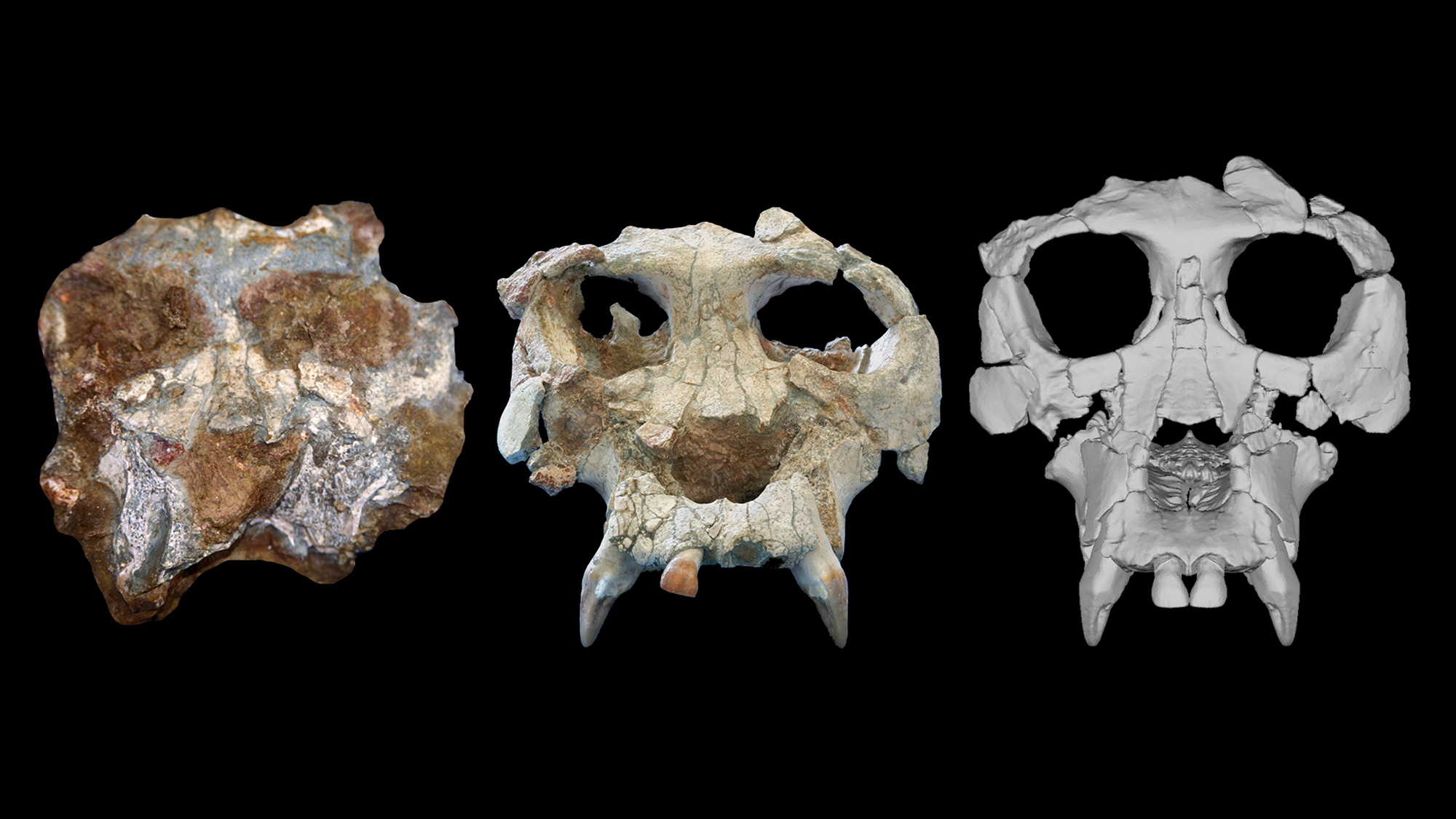

A team of scientists from Spain and the United States reconstructed the skull of an extinct great ape species from a set of well-preserved, but damaged skeletal remains. The bones belonged to Pierolapithecus catalaunicus who lived roughly 12 million years ago. Studying its facial features could help us better understand human and ape evolution and the findings are described in a study published October 16 in the journal Proceedings of the National Academy of Sciences (PNAS).
[Related: This 7th-century teen was buried with serious bling—and we now know what she may have looked like.]
First described in 2004, Pierolapithecus was a member of a diverse group of extinct ape species that lived during the Miocene Epoch (about 15 to 7 million years ago) in Europe. During this time, horses were beginning to evolve in North America and the first dogs and bears also began to appear. The Miocene was also a critical time period for primate evolution.
In the study, the team used CT scans to virtually reconstruct Pierolapithecus’ cranium. They then used a process called principal components analysis and compared their digital reconstruction of the face with other primate species. They then modeled the changes occurring to some key features of ape facial structure. They found that Pierolapithecus shares similarities in its overall face shape and size with fossilized and living great apes.
However, it also has distinct facial features that have not been found in other apes from the Middle Miocene. According to the authors, these results are consistent with the idea that Pierolapithecus represents one of the earliest members of the great ape and human family.
“An interesting output of the evolutionary modeling in the study is that the cranium of Pierolapithecus is closer in shape and size to the ancestor from which living great apes and humans evolved,” study co-author and AMNH paleoanthropologist Sergio Almécija said in a statement. “On the other hand, gibbons and siamangs (the ‘lesser apes’) seem to be secondarily derived in relation to size reduction.”
Studying the physiology of extinct animals like Pierolapithecus can help us understand how other species evolved. This particular primate species is important because the team used a cranium and partial skeleton that belonged to the same individual ape, which is a rarity in the fossil record.
[Related: Our tree-climbing ancestors evolved our abilities to throw far and reach high.]
“Features of the skull and teeth are extremely important in resolving the evolutionary relationships of fossil species, and when we find this material in association with bones of the rest of the skeleton, it gives us the opportunity to not only accurately place the species on the hominid family tree, but also to learn more about the biology of the animal in terms of, for example, how it was moving around its environment,” study co-author Kelsey Pugh said in a statement. Pugh is a primate palaeontologist with the American Museum of Natural History (AMNH) in New York and Brooklyn College.
Earlier studies on Pierolapithecus suggest that it could have stood upright and had multiple adaptations that allowed these hominids to hang from tree branches and move throughout them. However, Pierolapithecus’ evolutionary position is still debated, partially due to the damage to the specimen’s cranium.
“One of the persistent issues in studies of ape and human evolution is that the fossil record is fragmentary, and many specimens are incompletely preserved and distorted,” study-coauthor and AMNH biological anthropologist Ashley Hammond said in a statement. “This makes it difficult to reach a consensus on the evolutionary relationships of key fossil apes that are essential to understanding ape and human evolution.”
